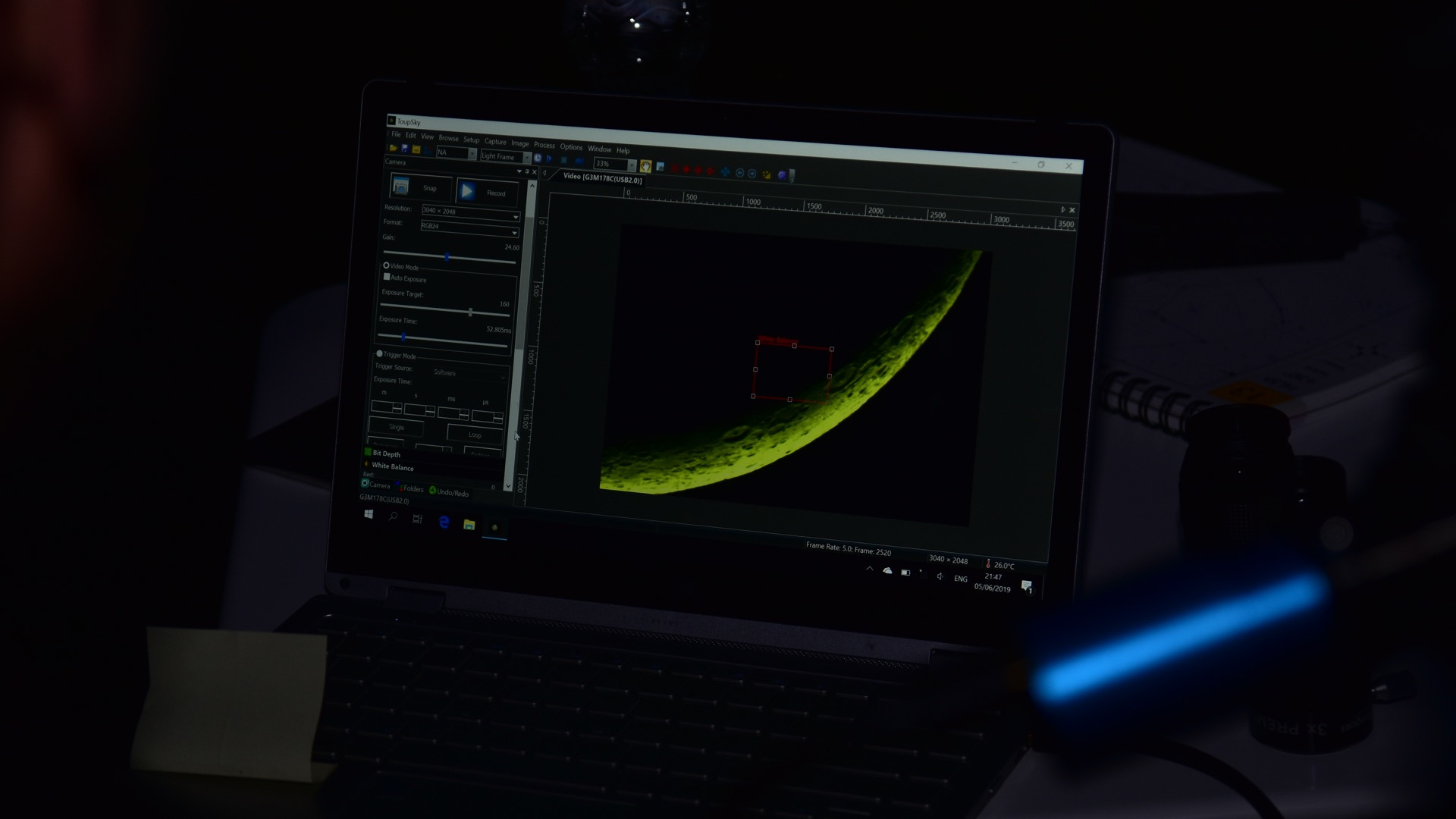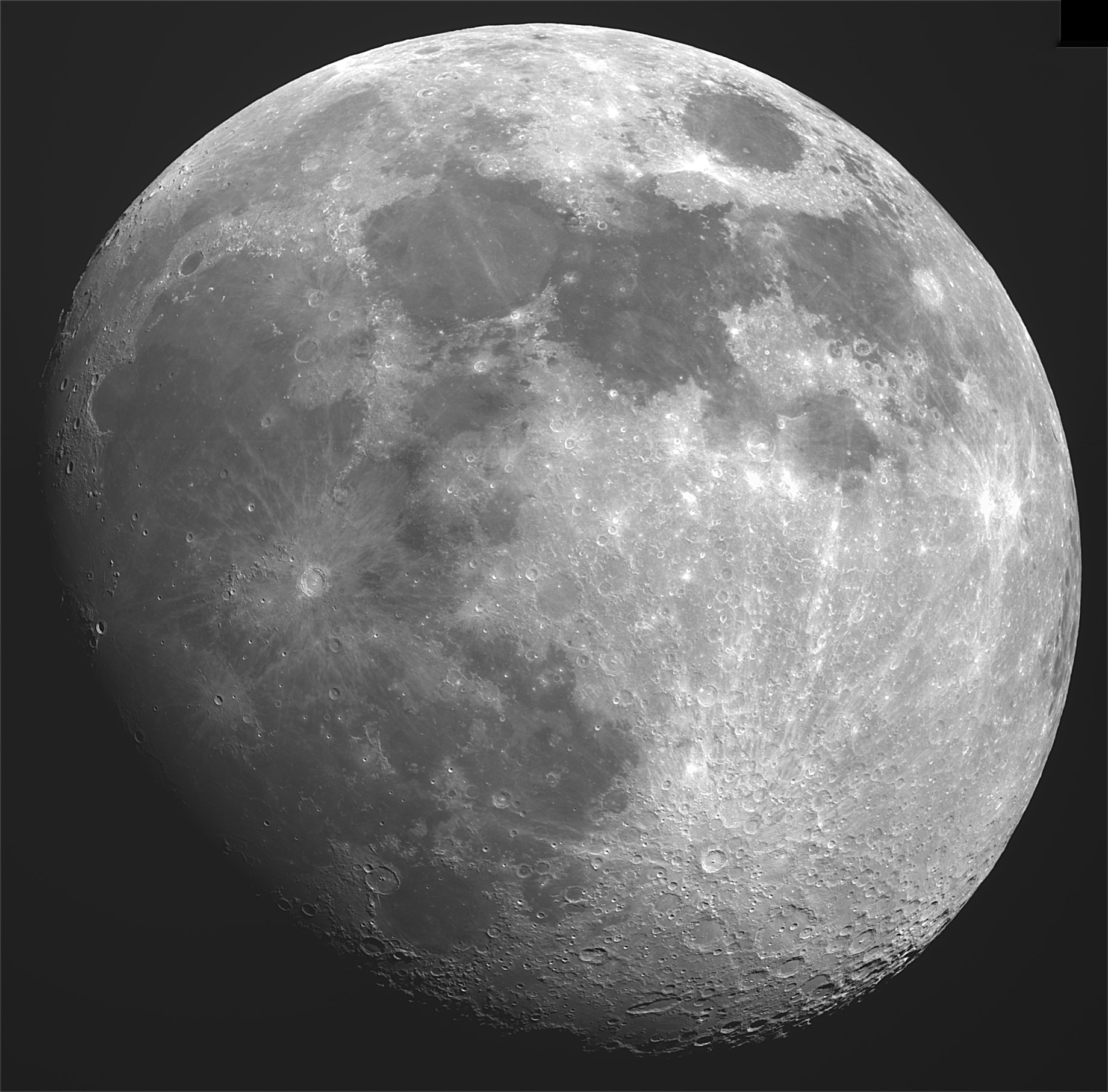Astronomy software
Star chart programs help you to orient yourself in the night sky. Astrophotography is also not forgotten.

There is a wide variety of commercial and free star chart and planetarium programs with which you can simulate the night sky on your computer. GUIDE is most commonly used. THE SKY and Redshift are also popular. Redshift incorporates excellent learning software that provides comprehensive information about astronomy. Free programs include Hello Northern Sky and Cartes du Ciel.
There are a number of free programs on the internet for astronomical image processing and image capture. The following are popular:
- Giotto
- Registax
DSLR camera (Canon EOS) owners prefer to use:
- Fitswork
- Regim
Besides Registax and Giotto, Autostakkert is increasingly popular for planetary and lunar videos.
Autostakert is available here:
A video on how to use Autostakkert is available here:
http://www.youtube.com/watch?v=zQGyzAMzShg
In addition, there are numerous programs on the internet for specific purposes. For example, Muniwin is often used for photometry:
Astronomy using freeware programs
''Anything that’s free is not worth having''. This saying is often unjustified, at least in the case of software. For some applications there are good freeware alternatives to the proprietary products, and in some cases the freeware is even the standard. Most observers think of astronomy software as some kind of planetarium program. Planetarium programs are electronic star charts that show when certain objects are best observed. Rising and setting times are given, and the positions of planets, including minor planets, are calculated for any point in time. In the case of clusters and nebulae, you can create charts to print for use at the telescope. Some planetarium programs also offer the option of controlling GoTo-enabled telescopes at the click of a mouse.
Proprietary software: Guide, Redshift and The Sky
In the proprietary sector, Redshift, Guide and The Sky are particularly successful. The advantage of these programs lies in their comprehensive documentation and their customer service. Each program has its own strengths and areas of focus. Redshift, for example, has a didactic approach and includes simulations of star evolution as well as the biographies of great astronomers. Guide is often praised for its true to life charts, while The Sky is particularly popular for telescope control. Current orbit data on comets and minor planets that is compatible with Guide and The Sky can be found on the homepage of the Minor Planet Center. Because each software package tends to focus on different areas, many amateur astronomers install more than just one.
 The 11-day-old waxing Moon in a composite of four photographs. 1,000 images of each region were captured, aligned in AutoStakkert and the best 5 percent stacked. Sharpened retrospectively with contrast processing in Registax. Photo: Bengt Lindqvist
The 11-day-old waxing Moon in a composite of four photographs. 1,000 images of each region were captured, aligned in AutoStakkert and the best 5 percent stacked. Sharpened retrospectively with contrast processing in Registax. Photo: Bengt Lindqvist Freeware: Hello Northern Sky and Cartes du Ciel
There are dozens of freeware supplements and alternatives. We cannot cover all the various planetarium programs here. For this reason, we are focussing on two familiar variants, namely Hello Northern Sky and Cartes du Ciel.
Hello Northern Sky is handy software with low memory requirements and an intuitive user interface. The chart image is true-to-life, and the basic 4 MB version includes all stars up to magnitude 8. Various other star catalogues can be added from the programmer's homepage. Hello Northern Sky focuses entirely on classic planetarium software tasks and is free of confusing gimmicks.
Position of planetary moons
However, tight programming and low memory requirements also take their toll. Thus, there are no detailed maps of the Moon or the surfaces of planets. However, the positions of planetary moons are nicely displayed! There aren’t many other programs that show, for example, data on the position of the moons of Uranus. Cartes du Ciel offers a much greater range of functions than Hello Northern Sky. It is the most widely used free star chart program. There are a large number of downloadable catalogues, that do not need to be downloaded in their entirety, but instead can be partially downloaded to cover just a certain region of the night sky. This allows you to download information on stars up to magnitude 16, without filling your hard drive with unnecessary data. Comet information can be updated via the Internet. The data format is compatible with The Sky. The central meridian is given for all planets and the program even simulates a precise view of the planet’s surface. This provides a useful basis for comparison when observing Mars, for example. With Cartes du Ciel you can also directly simulate what you should see on your eyepiece, on the CCD chip or in your finder. For this purpose, there is a screen where you can enter data about your optics. Cartes du Ciel comes in various language versions, including German.
The basics are explained well in the German book 'Praxisbuch der Astronomie mit dem PC’ (Practical Guide to Astronomy with a PC) by Steffen Brückner (available from second-hand bookshops). We recommend this book to all customers planning to use astronomy freeware! Besides the planetarium program Cartes du Ciel, the most important astronomical image processing programs are also explained there.
Video astronomy: programs for processing planetary images
The best known freeware program in this sector is probably Giotto. Its programmer Georg Ditié is a pioneer of video astronomy, which has enjoyed a tremendous boost in recent years thanks to the increasing use of webcams. Indeed, these inexpensive computer cameras are now regarded as the technology of choice when it comes to photographing Moon and planetary details. By stacking thousands of individual frames, you can achieve results that would have been unthinkable just a few years ago. Giotto offers the most comprehensive algorithms for the automatic selection of raw images and subsequent image sharpening. The user needs some level of experience due to the numerous adjustable parameters.
The rival product Registax, which is also described in the book by Steffen Brückner, is a little more user-friendly. Giotto and Registax are optimized for mass data processing for planetary photography. Other programs are usually used to process deep sky photography. In German-speaking countries, Regim by Andreas Rörig and Fitswork by Jens Dierks, for example, are popular. These focus on images captured with digital SLR cameras (DSLRs). Functions on offer include the calibration of raw images (dark field and flat field correction), de-blooming as well as the alignment and rotation of the individual images. It is also possible to combine individual colour channels into a single RGB image.
